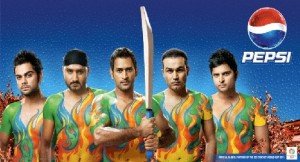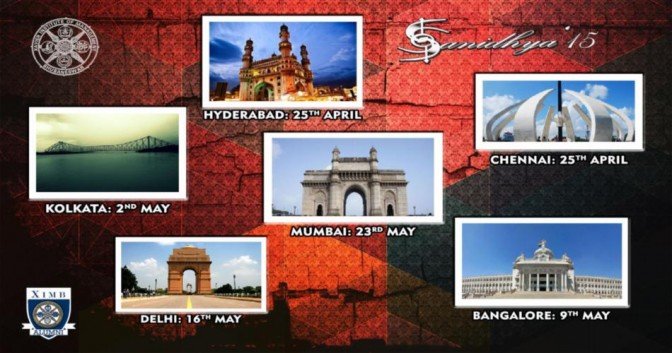Understanding the branding strategy of Pepsi goes beyond the listing of a set of steps which can effectively summarize their strategy. The entire strategy revolves around the company’s response to the changing dynamics of consumer psychology. This article makes an attempt to unscramble the complexities involved in the branding steps undertaken by Pepsi and the impact of the marketing campaigns undertaken by the company.
Before we try to study the competitive environment in which Pepsi operates, it is necessary to understand the mechanics of PepsiCo’s entry into India. This is essential because the pillars of the success of PepsiCo’s brand were laid in the early years of its entry. Till 1977, Coca-Cola was the leading soft drink company in India. However, the regulations in the country laid down by the Foreign Exchange Regulation Act (FERA) and orders by the Indian government to reveal its secret recipe forced Coca-Cola to exit the Indian market. PepsiCo entered India in 1988 through a joint venture. The joint venture sold PepsiCo products under the Lehar brand (Lehar Pepsi). Post liberalization in 1991, the requirement for foreign companies to operate with a minority stake was relaxed, and PepsiCo bought out its partners.
Pepsi introduced its products in India at a time when the adoption of Western products by Indian consumers was on a rise. It did not have any significant competition in the country at that time and the late entry of Coke (1993) enabled Pepsi to establish a stronghold in the Indian markets. The Pepsi brand became synonymous with soft drinks and this helped the company in dominating the cola category in the early years.
Classification of Soft drink market
The soft drink market can broadly be classified into cola and non-cola drinks. The cola segment commands a market share of around 62%. The non-cola segment consists of soda, flavoured drinks and lemon drinks. For PepsiCo, while Pepsi is in the cola category, 7UP, Mirinda, Mountain Dew and Nimbooz populate the non-cola category. Other brands in PepsiCo portfolio include Aquafina (drinking water), Gatorade (sports drink), Tropicana (fruit juices), and Slice (juice-based drink). The brands operate independently but a change in the market patterns can make the parent company shift its focus from one brand to another.
Positioning of Pepsi
Since its inception, Pepsi has always targeted the youth segment. The changing demands and sentiments of the younger generation in the country have resulted in changes in the positioning of Pepsi. This can be observed from the changes in the taglines, logo, advertisement messages and means of communication of messages.

From ‘The choice of a new generation’ (1990), Pepsi has introduced a number of new taglines reflecting a shift in focus of the youth. ‘Yeh hi hai right choice baby, Aha’ was introduced in 1992, ‘Yeh Dil Maange More’ in 1999, ‘Yeh Pyass hai Badi’ in 2004 and ‘Yeh Hai Youngistaan Meri Jaan’ in 2008. The current Pepsi tagline is ‘Change the Game’ which started with company’s association with the 2011 Cricket World Cup and was successful in creating a prominent brand recall in the minds of the consumers. Pepsi advertisements have also been targeted at the youngsters. Pepsi focussed on two of the biggest obsessions of the Indian youth – Cricket and Bollywood – to design its advertisement campaigns. Even the hoardings, posters and print ads expanded on this theme. Popular celebrities from these two domains were used to generate a connect of the brand with the youth. These celebrities are treated as role models and trend setters for the youngsters and Pepsi has tried to make use of these desired qualities to project its brand. Its youth focus can also be observed from the change in its brand icon from Sachin Tendulkar to Mahinder Singh Dhoni. The success of the Indian cricket team in the recent times (specially the World Cup) has gone a long way in strengthening its brand value in the minds of the consumers.
Pepsi has even tried to leverage its logo as a means of connecting with its target consumers. Recently the Pepsi logo was modified to create a connection with popular emoticons. These changes in logo were undertaken at the global level but as a result of internet activities, they were also able to generate buzz among Indian youth.
Pepsi has also used internet as an effective means of reaching its target consumers. It has run a large number of digital campaigns and contests (‘Youngistan Anthem’ being one of the examples). The Pepsi facebook page serves as another means of connecting with its customers. It runs various contests, polls and campaigns on its facebook page to create a constant buzz.
Despite the evolving messages and communications, the central theme has always revolved around the youth and Pepsi has made sure that it stuck to the core theme of being associated with what the youth represents. The impact of the branding activities has been such that it has been successful in creating a craving of Pepsi ads among the youth.
Other initiatives/incidents affecting Brand Image
Apart from the marketing activities, PepsiCo has also taken up initiatives which help in the enhancement of its brand image. The setting up of an agricultural research centre in India was one such measure. PepsiCo also helped in the setting up of food and vegetable processing plants in Punjab which provided employment to farmers in the region. Apart from showing the company (and its brands) in a positive light, it also benefitted PepsiCo in its processed food business.
The Pepsi story has not always been one of positive brand building. In 2003, Pepsi, along with Coke, found itself in the midst of pesticide controversy. It was reported that the colas contained pesticides and insecticides in excess of what is allowed by the European Economic Commission. Though they were later cleared, the images of the brands suffered a huge negative impact. It took a substantial time for the companies to restore the faith of the consumers in the brands.
Distribution network
A strong distribution network has gone a long way in making sure that the marketing strategies have been converted to actual sales. In addition to branding strategies, the company also comes up with promotional strategies from time to time (E.g. freebies with its 2L packs). These further help in boosting the sales of the product.
Competitive landscape
If we go by the market shares, Coke lags Pepsi in market share in the cola segment (according to Euromonitor). However, both these brands command a market share less than that of Coca-Cola’s other cola brand, Thumbs-Up. Overall, the cola segment has seen a reduction in growth in the recent years. Despite this, Pepsi has been able to generate a healthy increase in sales (20% in 2011) as compared to other brands (8% for Coke).
The brand trust rankings of the major brands are volatile and also vary among different surveys conducted. While Coca-cola brand was rated higher in one survey, Pepsi got higher ratings in another major survey.
Challenges and Trends
In light of the tough competition in the soft drinks segment, both Pepsi and Coca-cola expanded their portfolios and ventured into other categories like fruit juices and mineral water. The companies are also foraying into tea and milk based drinks in response to the high preference of Indian consumer for non-carbonated drinks (tea, milk and coffee).
The increasing health-conscious segment is also shifting from the cola drinks to healthier alternatives. This can be one of the reasons for the declining growth rate of the segment. In response to these trends, Cola companies are coming up with new ways to attract consumers. Diet Pepsi was a product innovation by Pepsi in response to the changing requirements.
[The article has been written by Pulkit Pandey. He is currently studying in Indian Institute of Management Indore. He is an engineering graduate from NSIT, Delhi and has a year of work experience in Telecom Sales.]
Tags:
Coca-cola pepsi soft drink
You might like reading:
Posted: November 2, 2013
With RBI announcing the second quarter of its monitory policy , Raghuram Rajan and co. took the measures to anchor the rising inflation rate in the country. As expected by most banks and investors, RBI hiked the repo rate by 25 bps from 7.5% to 7.75% increasing the cost of long term borrowings for the banks. However, RBI also cut […]

Posted: April 25, 2015
Being one of the premier B-Schools in India, Xavier Institute of Management, Bhubaneswar (XIMB) boasts of a widespread alumni network with its members occupying top positions in the corporate world. Each summer, XIMB community congregates in major cities across the country at Sanidhya – the annual alumni meet conducted by the Alumni Committees of XIMB to celebrate its legacy. Sanidhya […]

































